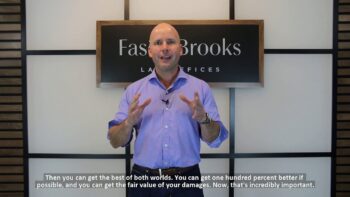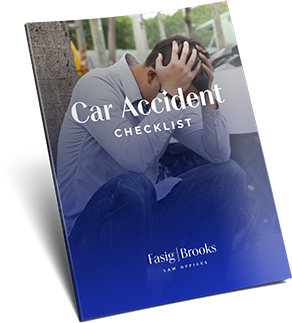Before most of my free time became consumed with attending and coaching my young boys’ soccer games, I was an active motorcyclist. I even conquered the Tail of the Dragon at Deal’s Gap on my own bike – a Suzuki SV 650. (For those that aren’t familiar with the Tail of the Dragon, it’s an insane mountain road in the Great Smokey Mountains that curves and twists an unreal 318 times in just 11 miles.)
Even though I spent most of my time either on a motorcycle or behind my desk as a lawyer (in my pre-kid days), I was relatively unfamiliar with the laws that affect motorcyclists. As I started litigating more and more claims involving motorcycle accidents, I realized that it is absolutely critical that every motorcyclist in Florida know the laws that affect them and, more importantly, knows how to adequately protect themselves with insurance coverage. Below is a brief overview:
Motorcycle Endorsement: Every driver/operator is required by the state of Florida to have a motorcycle endorsement through the Florida Department of Motor Vehicles. Those who already have a driver’s license will be issued an endorsement after passing an evaluation. Those without a driver’s license may qualify for a motorcycle-only license. For those licensed after July 1, 2008, Florida required a basic rider safety course.
Helmet Law: Currently, riders who are over 21 and carry an insurance policy with at least $10,000 in medical benefits are not required to wear a helmet under Florida law. However, in response to the significantly increased amount of motorcyclist deaths on our roads from accidents over the past 5 years, there is currently a bill pending in the Florida House of Representatives to change the current law to make riding a motorcycle without a helmet a non-criminal infraction.
Headlights: All riders in Florida are required to use a daytime headlight at all times. Florida allows modulating headlights to be used during the day. Modulating headlamps are an aftermarket feature which allow the front light to flicker. Many riders believe that a flickering headlamp makes them more visible during the day than a stagnant light. The failure to have your bike’s headlamp on during the day can be used to show that a rider was comparatively negligent in an auto accident that causes harm to the rider.
Eye Protection: Florida law requires eye protection to be worn at all times on a motorcycle. Anyone who has ever felt a pebble or bug hit their eye knows the logic behind this law.
Ape Hangers: In Florida, the handgrips on the handlebars of a bike cannot extend above the rider’s shoulders. This law is a bone of contention in Florida and across the country. Only 17 states have no laws regarding the height of handlebars. If you plan to embark on a cross country ride, as most bikers do, take a minute and google the handlebar laws of the states you plan to travel to. If you’re in an accident in another state and your handlebars are not in compliance with that state’s laws, the defendant driver may argue that you are comparatively negligent for your own injuries.
Helmet speakers: Helmet speakers are permitted for communication only. Earphones and ear bugs are against the law in Florida.
Riding two abreast: It is legal for motorcyclists to ride two abreast in Florida. Automobile drivers are required to give motorcyclists a full lane. No more than two riders can occupy the same lane at the same time. Riding side by side has proven safer for riders and allows for much easier communication.
Lane splitting: Riders are not permitted to split lanes or pass automobile drivers using the same lanes. Riding between lanes – as bikers often do to get to the front of a line in traffic at a light – is against Florida law. The only state in our Union which permits lane splitting is California.
Insurance Requirements: A motorcycle owner in Florida is not required to carry insurance. However, a motorcycle owner will be held financially responsible if charged with causing an accident. In that instance, an owner will have three options to choose from 1) purchase liability insurance; 2) post a surety bond and obtain a financial responsibility certificate; or 3) obtain a self-insurance certificate from the Bureau of Financial Responsibility.
Florida is a “no-fault state” which requires that each driver carry $10,000 in Personal Injury Protection coverage (“PIP) for one’s personal automobile. PIP will pay for 80% of your medical bills and 60% of your lost wages if you are injured in a car accident due to the fault of another driver. However, it is important to understand that one’s PIP coverage does not apply to one’s motorcycle. One in every four drivers in Florida is either uninsured or severely underinsured. So, if a rider gets hit by a negligent driver who doesn’t have any or enough insurance, that rider will face financial devastation unless the rider has invested in his or her own insurance policy.
Most motorcycle crashes cause catastrophic injuries which result in enormous medical bills that can easily drive one into bankruptcy. Instead of facing that potential risk, every single rider needs to invest in uninsured or underinsured motorist coverage (“UM coverage”). This insurance is very cheap and it’s the best money a motorcyclist can spend.
To quote my father-in-law, who is the owner and publisher of “Rebel Rider” magazine and also spent more than ten years serving as the Director of the annual Florida State HOG Rally, “it doesn’t make any sense to drop $40,000 on a motorcycle and not spend $250 a year on UM coverage.” UM coverage will provide you with the ability to pay your medical bills, compensate you for lost wages, and compensate you for pain and suffering in the event that a negligent driver injures you in a crash.
***
In the wake of a motorcycle accident, your choice of legal representation can have a significant impact on your case. At Fasig & Brooks, we are committed to fighting for the rights of riders and their families.
ABOUT THE AUTHOR:
Carrie Mendrick Roane is not only an experienced motorcyclist, but she is also a seasoned trial attorney. With nearly twenty years of legal experience, she is committed to providing compassionate and effective representation to each of her clients.






